|
15th February
Billy (Biggsy) Bigg
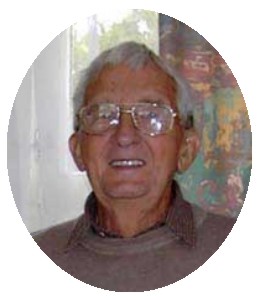
Royal Signals
Signalman
2587078
Attached to Beds/Herts Regiment
Arthur William (Billy) Bigg was born on the 15th February 1921 to Arthur and Mary Bigg.
When war broke out in 1939, Billy enlisted, joining the Royal Signals as Signalman 2587078.
|
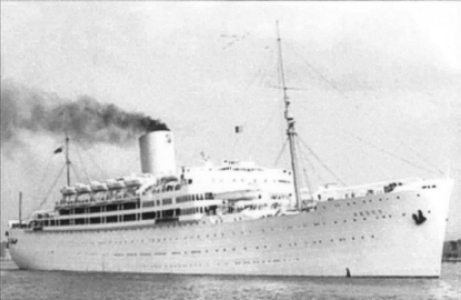
|
|
Andes
|
|
After initial training Billy was attached to the 148th Beds/Hearts Field Regiment, sailing from Liverpool with them in September 1941 aboard the Andes, being part of Convoy William Sail. The destination was presumed to be the Middle East, but with the Japanese threat, the 18th Division’s destination was changed to the Far East and Singapore.
A month later, there was no party, candles or celebration on his birthday. The 15th February 1942 would be remembered all his life, when the white flag was raised and Percival surrendered to the Japanese at the Ford Factory in Singapore.
|
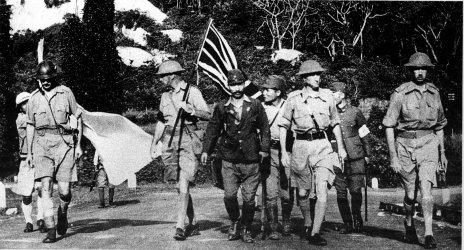
|
|
Wild (on left) had just refused to carry the white flag, Percival pictured on right
|
|
This was the start of an ordeal that Billy was lucky to survive, but every year, when his family celebrate his birthday, he would cast his mind back to that fateful day in 1942, which was the start of three and a half years in captivity and the cause of the deaths of many of his mates.
Billy spent the first six months at River Valley camp and life under the Japanese, at first, was not too bad for the 45,500 prisoners, but the Japanese soon ended this. Food was becoming a problem and the rice supplied caused dysentery. The Japanese began to promise better conditions elsewhere and in April 1942, 1,125 prisoners were shipped to Saigon under the command of Col. F.E. Hugonin. The month of May saw a further 3000 Australians make up ‘A’ Force, these being shipped, under the command of Brig. A.L. Varley, to Burma. A further 3,000 British left for Thailand by rail in June, these being transported in five parties of 600, called the June Mainland Parties. For these prisoners it was soon realised that Japanese promises were not to be believed, they were to be treated as slave labour. The final realisation was when all officers over the rank of Lieutenant Colonel were moved by ship to Japan, among them General Percival, Lt. Col. E.B. Holmes then took over as commander of the British at Changi.
The unrest amongst the prisoners was causing concern for the Japanese and Maj. Gen Shimpei Fukuye. He demanded the prisoners sign a ‘No Escape’ document, this the officers refused to do. On 2nd September 1942 the Japanese moved 16,000 fit prisoners to Selarang Barracks, Billy was amongst them. The sanitary conditions were appalling, with a latrine dug in the centre of the square which was inadequate to accommodate such a large number of prisoners. The barracks consisted of seven blocks, made to house just 800 personnel. Armed Indian and Japanese guards were placed around the perimeter and the siege began.
|
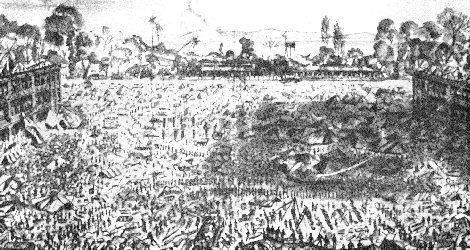
|
|
The Selarang Barracks Incident
|
|
by Charles Thrale
|
|
The prisoners had to feed themselves for the first four days from saved food, as the Japanese refused to supply any food, by the end of the four days the officers could see the men suffering and feared deaths would occur, so they issued orders to sign the document ‘Under Duress’.
Billy was now moved to Changi and eventually his turn came to be moved and he was taken by rail to Thailand to work on the construction of the now infamous Thailand-Burma railway, later to be called the ‘Death Railway’.
|
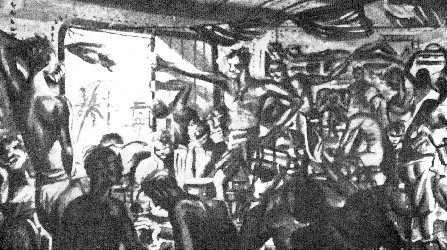
|
|
Thailand by Cattle Truck
|
|
by Charles Thrale
|
|
The railway was to run from Nong Pladuc in Thailand through 257 miles (415km) of jungle to Thanbyuzayat in Burma. This project had been proposed and rejected before the war as the British engineers said it was near impossible to complete without a large workforce which would have a high number of casualties.
The work on the railway played havoc with the prisoners health, minds and their uniforms. Their clothes becoming torn, warn and then discarded for a Fondushi, G-string or loin cloth. The prisoners nicknamed this commonly warn garment the Jap Happy.
The Jap Happy was a rectangular piece of cloth which was tied around the waist, passed between the legs and tucked under the cord, thus giving the prisoner some dignity in the heat of the jungle.
|
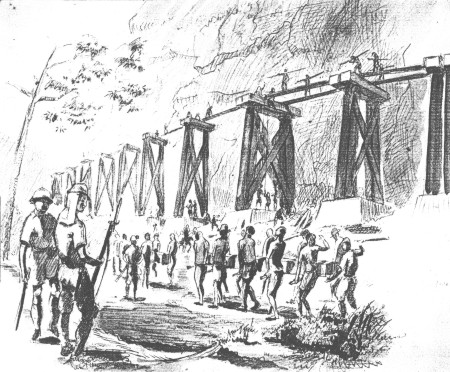
|
|
Prisoners working on the Wampo Viaduct, wearing the Jap Happy
|
|
by W.C. Wilder
|
|
Arriving at Ban Pong station, Billy was marched to Wampo passing through Kanchanburi, and Tamakaan. Work was hard and fatigue caused many deaths, the Japanese were being careful when blasting the route along the rock face, if the prisoners were not aware, they would be hit by flying rocks and rubble, which in some cases these proved fatal. Work became a routine, malnutrition causing illness and mental fatigue, the prisoners drifted away from reality into a living nightmare.
When the viaduct at Wampo was finished they were moved further along the track to Tarso. At last after three and a half years of degradation, starvation and mental torture the war ended with bombs being dropped on Hiroshima and Nagasaki, Billy was still working on the railway, at Tamauang camp.
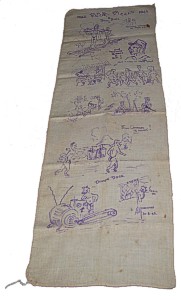 At this time a hut mate drew on Billy’s Jap Happy and it still remains in Billy’s possession to this day. At this time a hut mate drew on Billy’s Jap Happy and it still remains in Billy’s possession to this day.
Starting from the top, the drawings tell their own story.
 Section 1 Section 1
 Section 2 Section 2
 Section 3 Section 3
 Section 4 Section 4
 Section 5 Section 5
When released Billy was flown by DC3 to Rangoon.
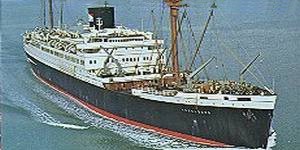 At Rangoon the 1577 prisoners ready to be shipped home were split between the ships, the Boissevain and Empire Pride. At Rangoon the 1577 prisoners ready to be shipped home were split between the ships, the Boissevain and Empire Pride.
Billy boarded the Boissevain (M.S.) on the 20th September 1945 bound for Liverpool and home, arriving at Liverpool docks on the 12th October 1945.
Billy was released from the army on the 15th February 1946, the entry reads:
Arthur William Bigg
Rank. Signalman
Number 2587078
18th Division
148th Beds/Hearts Field Regiment.
Released on Y list.
Billy’s sister had married before the war and her husband Sid, had a sister called Joan, and Billy liked the look of her. Unfortunatley, during the war, Sid was killed flying in a Lancaster bomber somewhere over Germany.
On Billys return he was reunited with Joan, marrying on the 1st June 1946. Billy lived with his new bride at Raleigh in Essex and on the 16th August 1948, almost 3 years to the day when the prisoners found out the war was over, a son was born.
Billy found it hard settling back in England and sought a warmer climate, so in 1956 Billy and his new family moved to New Zealand.
Billy’s grandson Shaun, was born on the 15th February 1979.
|
|
|
Shaun and Billy
|
|
pictured 15th February 2004
|
|
After 60 years the memories are fading although Billy still remembers the faces of mates who never made it home, but the 15th February can now be remembered with some joy.
|